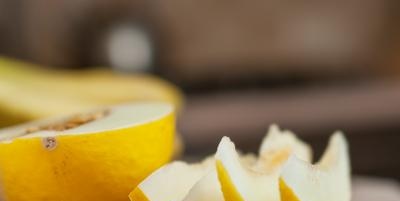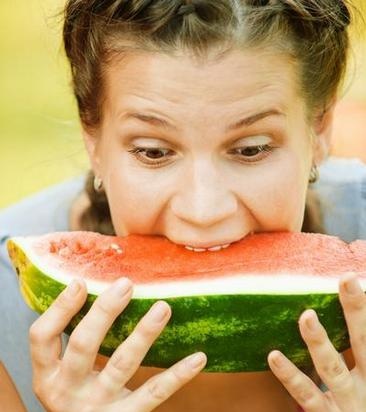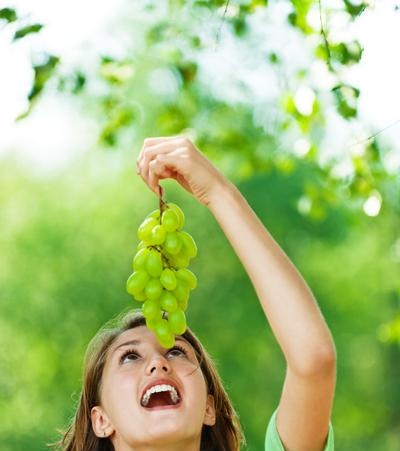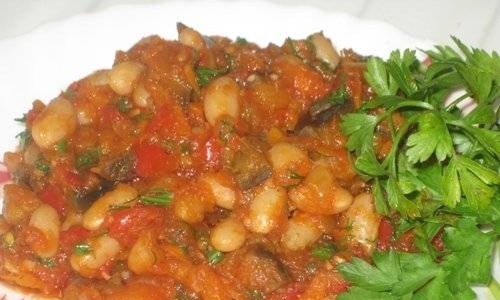|
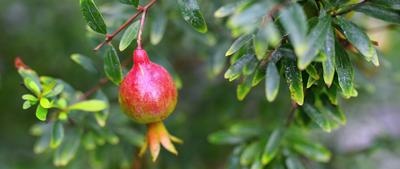 The pomegranate has everything red. And the fruits. And flowers. Stamens and pistils. And even leaves when young. Why such a catchy appearance? Flowers - counting on pollinators. Fruits for seed carriers. The pomegranate has everything red. And the fruits. And flowers. Stamens and pistils. And even leaves when young. Why such a catchy appearance? Flowers - counting on pollinators. Fruits for seed carriers.
With this specialization, it is reasonable to expect the pomegranate to spread throughout the world with the support of the animal kingdom. But no, his possessions are more than modest. Here - in the very south: across the Caucasus and the mountains of Central Asia. Abroad - in neighboring Iran, Afghanistan and North India. That seems to be all.

However, maybe this is not accidental. Mother Nature's pomegranate turned out to be unfinished in other respects. It is unclear if it is deciduous or not? In the forest and in the garden, it is clearly deciduous. And a little moved to the greenhouse - it becomes evergreen. In India, it is also evergreen, although it seems not everywhere. It is believed that it was not deciduous before. It became such by force, during the Tertiary period, when it got colder on the planet and had to be rebuilt. I haven't had time to get used to it yet ...
Deciduousness is still half the trouble. She even helps out the tree in cool climates. But a significant drawback is the falling of fruits in early summer. Of course, both the apple tree and the pear also have a lot of carrion at the beginning of summer. The tree sheds some of its wealth so as not to overspend the "building material". The pomegranate drops not part, but all the ovaries. Not a single fruit remains on the tree! True, not all grenades behave this way. But sometimes a good half of them in the garden are empty.
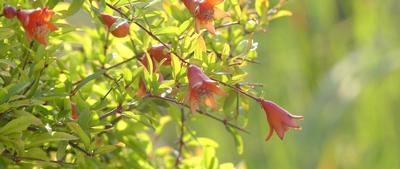
Botanist O. Kulkov from the South Uzbek experimental station did a lot to make the tree work. He gave double, triple doses of fertilizer. He fed with microelements. Didn't help. He also applied more severe measures of influence: he ringed the trunks, pulled large branches with wire, sawed off the roots. Wounded trees always respond to such execution with a bumper harvest. The pomegranate didn't react in any way.
Finally, it was possible to notice that empty trees are found in old, neglected gardens that have long been left without maintenance. True, later they found young ones, in which the fruits fell completely. But it turned out that these young gardens were planted from cuttings that were cut in old, abandoned ones. A bad sign is inherited. But why?
Experts think so. Pomegranate barely just adapted to the local climate, but here they still create additional difficulties. From time immemorial, cuttings are cut and bred vegetatively. With each new generation, the species becomes more and more unstable. And then there is poor care in the garden ... Compare with potatoes. Don't potato varieties also degenerate with endless planting of tubers? The only difference is that in potatoes all parts of the plant are affected. And the pomegranate cost only the sphere of reproduction. The tree itself, having got rid of its offspring, uses its reserves for itself personally and grows more luxuriously.
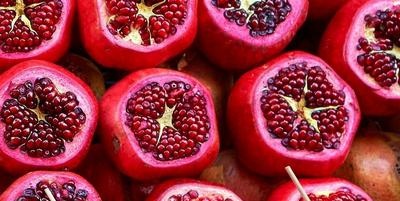
Gardeners have found that the pomegranate has another important flaw in biology - the cracking of the fruit. In some varieties, like a watermelon, just touch it with a knife - it will crack. And the juice will flow. Cause? The rind stops growing and the grains continue to pour. In particular, the fruits of wild trees in the forest often crack. The weather plays the role of a knife. At first, biologists could not understand: what does a grenade need to crack the fruit? Some believed it was freezing. Others are rains. Still others, on the contrary, believed that the weather should be dry. Then it turned out that any reason was at work. Both frost and warmth. Especially if the transition is abrupt. In a dry and warm autumn, as soon as a freeze breaks out or it rains, the fruits begin to crack.
And in a humid rainy summer, one hot and dry sunny day is important. This is the law of nature. The fruits do not crack by accident. This is a guarantee that the seeds will not lie under a hard shell, but will serve to prolong the pomegranate genus.
Gardeners, of course, tried to get rid of the disadvantageous feature, but they could not completely overcome it. The fruits of the cultivated pomegranate also crack. But we managed to increase the size. There are 20 centimeters and even more.
In addition to the common prickly pomegranate (there are thorns on the branches!), There is another species in the pomegranate family - the Socotran pomegranate from Socotra Island in the Indian Ocean. The Sokotransky possession is even less. One tiny island. Why? Apparently, the fact is that the fruit of the Socotran is dry. The grains have no juicy shells. And without them, the animals, apparently, do not undertake to carry seeds. Here is a tree and does not settle far.

In this regard, please pay attention to one fun fact. Gardeners have long wanted to grow pomegranate fruits without seeds. To get a glass of juice under the skin! And no bones to spit out later. The watermelon managed to get such fruits. Although the seedless fruits of the pomegranate grew, they did not have juicy pulp. She disappeared along with the seeds, because she herself is a part of the seed, its appendage. And the fruits grew as dry as that of the second species from Socotra Island!
However, not everywhere and not everyone is interested in pomegranate fruits. In Jamaica, pomegranates are often planted for beauty.
Jamaicans find the crimson garnet outfit especially attractive.
A. Smirnov. Tops and roots
|
 The pomegranate has everything red. And the fruits. And flowers. Stamens and pistils. And even leaves when young. Why such a catchy appearance? Flowers - counting on pollinators. Fruits for seed carriers.
The pomegranate has everything red. And the fruits. And flowers. Stamens and pistils. And even leaves when young. Why such a catchy appearance? Flowers - counting on pollinators. Fruits for seed carriers.


































